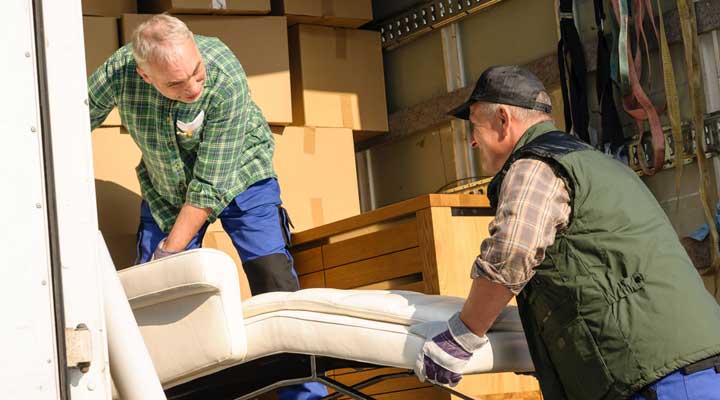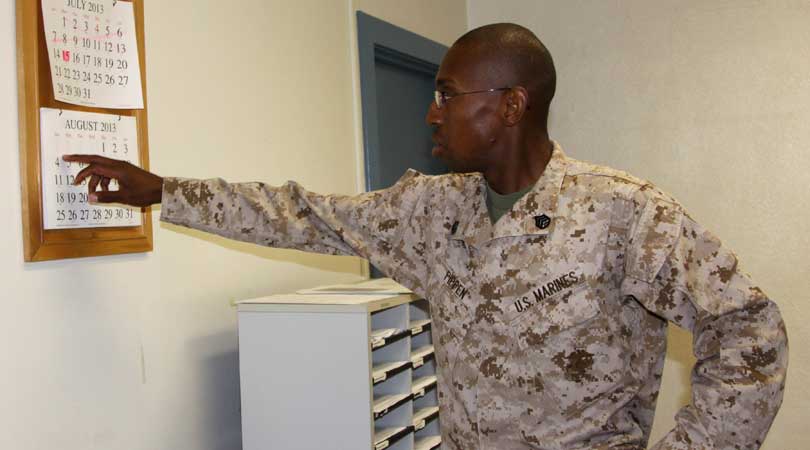
How to Organize for a Move – The Best Moving Checklist Ever
Mar 31, 2023 / Ann Griffith
If your spouse is a bit of a sergeant major when it comes to planning for a move, consider yourself very lucky, because he (or she!) can help with a terrific moving checklist.
Every good soldier knows, after all, that military personnel are tops at keeping household gear organized and safe during a move, whether it’s across town or around the globe. That’s why we reached out for moving tips from Staff Sgt. Douglas Pippin, who manages thousands of successful relocations a year to the far reaches, all from his desk at Marine Corps Base Camp Pendleton in Southern California.
“You never know how much stuff you’ve got until you try to move it,”; he said, adding that one of the first steps for every move should be to toss what you don’t need.
Military moves also incorporate a detailed inventory, matching numbers on moving boxes and tags on furniture to numbers on detailed lists. That way, you know where everything is when it arrives, and you can follow up with the moving company and file a claim if something is missing.
Another of the most important things to remember? Keep your eyes on the movers to make sure your stuff makes it onto the moving truck safely. Consider your moving day like a day on the job, said Staff Sgt. Pippin. Make sure items are well-wrapped and labeled when they’re placed into the moving van. “Sometimes the 'quickly’ part outweighs the 'careful’ part,”; he warned of movers.
Well put. In fact Sgt. Pippin’s advice to civilians is so top-notch, we think his tips may be the best out there. Please check out our Public Storage moving checklist, based on his military instructions. Thanks, Sarge!
The Best Moving Checklist Ever
Download and Print the Public Storage Moving Checklist
Things to Do in Advance of Your Move
- Shop carefully for a mover. Companies that serve the military are worth seeking out. If there are too many complaints from recruits, moving companies can get banned.
- Book a moving company as early as possible, especially during the busy summer months when moving truck rental is in high demand.
- Organize and cull items you no longer need, and save packing time in the long run.
- Sort your stuff and group like items together into moving boxes.
- Have valuables appraised. Set aside appraisal records and carry with you when you move.
- Locate original receipts for expensive items and carry them with you when you move.
- Consider using a video camera to show the working condition of electronics. Shoot photos of furniture and other expensive items. You can even take pics of boxes before they are closed.
- Gather moving supplies if they won’t be provided by a mover: boxes, markers, box cutters, packing tape, bubble wrap, old blankets, stickers and tags.
- Create a numbered blank inventory list and matching numbered inventory stickers in advance. Have tags on hand to number and tie to furniture.
- Pack important documents, small valuables and sentimental possessions such as photos, in suitcases to carry with you when you travel. Stash away from movers in the locked trunk of your car or with a neighbor the day of the move.
- Set aside enough clothes and toiletries for the duration of your move.
- Notify banks and credit card companies of your new address.
- Discontinue services such as electricity and cable at your old home and transfer to the new.
- Complete an address change form online at https://moversguide.usps.com
- Create an information sheet for the moving company with your old address, your new address with driving directions and your cell phone number.
- Withdraw cash for your trip and for tipping the movers.
- If you can’t be there when movers arrive at your new home, designate a person to meet them.
Packing for Your Move

- Make sure heavy items are packed at the bottom of boxes and towards the bottom in the moving truck.
- If you plan to pack yourself, you can start several weeks early with infrequently used items from attics and other storage areas.
- Make sure every box and loose item, such as furniture, is labeled with a numbered inventory tag or sticker and that all numbers appear on the inventory list, along with item descriptions.
- Make sure the descriptions on your inventory sheet are very specific before you sign off on it with a mover. List model numbers and brands.
- Drain all gasoline, oil, and water from equipment such as lawn mowers.
- Whether working with friends or professionals, monitor your movers to make sure they are adequately wrapping and packing everything and that items are secured well in the van.
- After you think everything is on the moving truck, do a walkthrough of your home to make sure.
- Get keys to the real estate agent, new owner or landlord.
Arrival and Unpacking
- Check items off the moving inventory list as they are unloaded.
- Inspect for damages. Photograph relevant items before signing the moving company release (sometimes referred to as a bill of lading).
- Test faucets, toilets, utilities, phones, smoke detectors, and security systems.
- Turn on water heater if necessary.
- Begin to unpack.
- Flatten boxes. Set them out for recycling, or store for future use.
Finally, just remember the sage advice of the online pamphlet Defense Transportation Regulation – Part IV, Personal Property:
“A successful move is not a matter of chance. It is the result of planning and hard work.”;
Yes, Sir!







